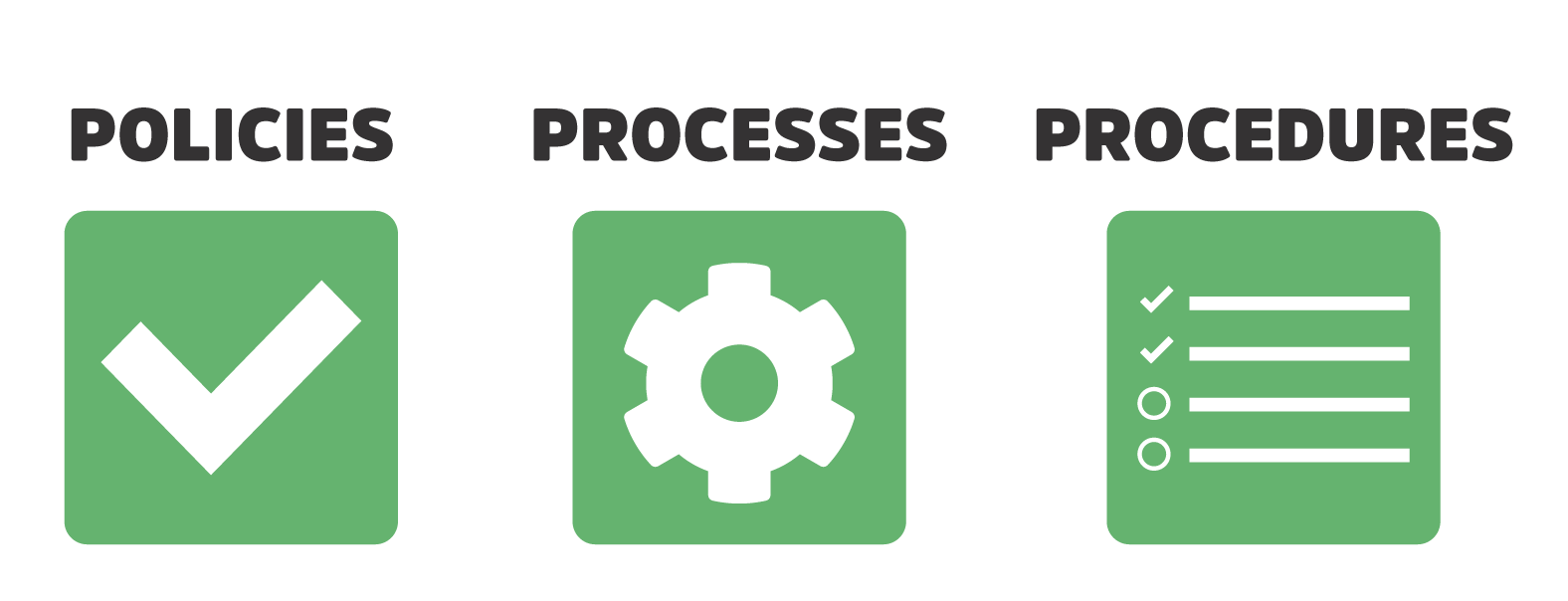Hopefully by now you’re sold on the benefits of Systemizing your business and creating Policies, Processes and Procedures to help your employees manage the business. But you might be wondering, how on earth do you remove yourself from all your different roles and responsibilities and find the time to Systemize your business?

Why you probably don’t have time to work on your business right now
Business owners tend to get involved in every area of the business and have many different roles, not because they don’t trust their employees, but because they have a certain ideal about how some things should be done, or certain knowledge about how to do it faster. So it becomes easier for them to just do these tasks themselves. But because they’re so busy ‘doing’, they don’t have enough time to spend on improving the business.
That’s why you need to create an Operating Manual, which is the first step towards removing yourself from any role other than that of ‘Leader’ and creating more time to work on the business, not just in it.
How to remove yourself from working in your business
Your main objective is to rid yourselves of all the tasks and responsibilities you have now, and pass them on to someone else, so you can work on turning your business into a well-oiled, finely-tuned machine. But you’re never going to feel comfortable passing those important jobs on to someone else, until you give them the tools they need to do it exactly how you want them to. To do these, you need to give your employees an Operating Manual.

The 3 items you need to create your Operating Manual
- Policies: The overall guidelines your employees must follow e.g.:
a. Health and safety policies
b. Refund policies
- Processes: The flows of activity that describe how something should be carried out e.g.:
a. Your artwork approval process
b. Press cleaning and maintenance process
- Procedures: The detailed instructions of steps e.g.:
a. A checklist of information to collect from a customer for an RFQ
b. A checklist for jobs to ensure all specifications are correct before going to press

How to get started creating your Operating Manual
The best way to get started on your Operating Manual, is to create Processes and Procedures for all your own roles and responsibilities. That way you can pass them on to someone else, freeing up your time to Systemize the rest of the business.
Here’s how you do that:
- Make a list of all the tasks you carry out in your business.
- Choose one of those tasks.
- Draw a workflow diagram that describes the overall Process for this task.
- Then create a Procedure that very clearly lays out how you go about completing that task, step by step. Within each step you should include rich detail to guide your employees and make sure no mistakes are made. A Process can have more than one Procedure associated with it.
- Follow your Process and Procedures, each time you carry out the task in the future and improve it until you’re happy.
- Then train an employee to follow the Process and Procedures and check in with them from time to time to make sure it’s working well. If you don’t have a suitable employee to pass it on to, you’ll need to consider hiring someone. This will certainly be the case if there is only yourself carrying out all the activities for a particular function e.g. marketing or financial.
- Do the same with all your other tasks until your only responsibilities are those of being a leader.
Now you can Systemize the rest of your business!
In the 4th article of our Systemization series, we’ll be looking at how you can continuously improve your business once you have your Operating Manual in place and how to avoid ‘System busters’, so don’t miss it!